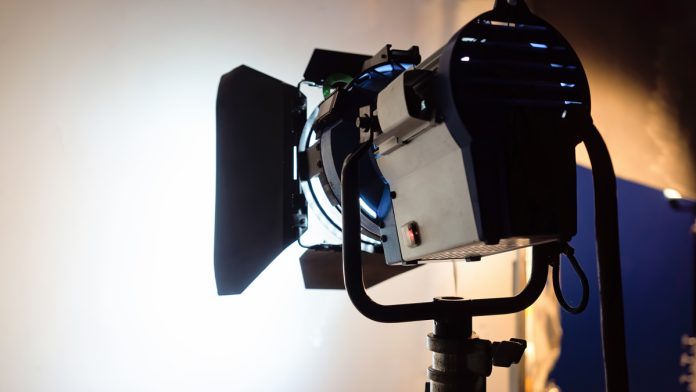Matte boxes are essential tools in the cinematic equipment industry, specifically designed to control and shape light for superior image quality. Their sophisticated design reflects a careful application of scientific principles and advanced construction techniques. By blocking unwanted stray light, supporting seamless filter integration, and adapting to dynamic shooting conditions, matte boxes help filmmakers achieve impeccable visuals. Exploring the Physics and Engineering Behind Matte Box reveals the blend of optical innovation and robust design that elevates cinematic performance on set.
| Table of Contents | |
|---|---|
| I. | Optical Light Management and Stray Light Suppression |
| II. | Anti-Reflection Coatings and Glare Minimization |
| III. | Versatile Filter Integration and Alignment |
| IV. | Precision Optical Geometry and Vignetting Control |
| V. | High-Performance Materials and Structural Integrity |
| VI. | Ergonomic Design and Weight Distribution Engineering |
| VII. | Adjustable Flags and Light-Shaping Mechanisms |
| VIII. | Thermal Management and Heat Dissipation |
| IX. | Advanced Mechanical and Modular Assembly Techniques |
| X. | Integration with Modern Cinematic Camera Systems |
Optical Light Management and Stray Light Suppression
Matte boxes excel in optical light management by employing strategically placed baffles and internal flags to control light intake. This design minimizes stray light, significantly reducing lens flares and ghosting that can compromise image clarity. The arrangement of light-absorbing surfaces within the device ensures a controlled light path. Emphasizing the tenets of Physics Behind Matte Box, the optical configuration harnesses natural refraction and reflection principles to sustain consistent exposure even in challenging lighting conditions.
Anti-Reflection Coatings and Glare Minimization
Matte boxes utilize specialized anti-reflection coatings on internal surfaces to reduce unwanted glare and reflections. These coatings diminish light bouncing off surfaces, preserving image fidelity by preventing specular highlights that can disrupt visual balance. By minimizing flare and maintaining contrast, the device ensures that the captured image remains clear and vivid. This approach complements the overall optical strategy, reinforcing the matte box’s role in achieving professional-quality cinematic visuals.
Versatile Filter Integration and Alignment
Designed for adaptability, matte boxes support the integration of various filters to alter color balance, contrast, or diffusion effects. Their modular construction allows for quick filter changes and precise alignment along the optical path. This versatility enables cinematographers to respond rapidly to shifting environmental conditions and creative demands. The seamless filter integration empowers creative control, ensuring that each filter precisely enhances the desired visual outcome without compromising image integrity.
Precision Optical Geometry and Vignetting Control
Precision in optical geometry is paramount in matte box design to avoid interference with the camera lens and eliminate unwanted vignetting. Carefully engineered internal dimensions and angles guide light consistently across the image frame. Such meticulous design ensures uniform illumination while reducing edge darkening. Incorporating principles found in Physics Behind Matte Box, manufacturers achieve a refined balance between light control and optical clarity, essential for capturing high-quality cinematic imagery.
High-Performance Materials and Structural Integrity
Matte boxes are constructed using high-performance materials like lightweight aluminum and durable composites to ensure robust structural integrity. These materials offer the strength needed to withstand rigorous use while keeping the device lightweight for ease of operation. Rigorous quality testing under diverse conditions guarantees that the matte box remains resilient and reliable. This commitment to premium materials directly supports the device’s longevity and sustained performance in professional cinematic environments.
Ergonomic Design and Weight Distribution Engineering
Ergonomics is a key element in matte box design, ensuring ease of use during long shooting sessions. A well-balanced matte box distributes weight evenly across the rig, minimizing operator fatigue and enhancing overall stability. Advanced design techniques enable quick adjustments and intuitive controls. Incorporating elements of Engineering Behind Matte Box, designers focus on creating an interface that supports both efficient handling and optimal performance, making the matte box a truly indispensable accessory for filmmakers.
Adjustable Flags and Light-Shaping Mechanisms
Adjustable flags, or cutters, are integral to matte boxes, offering precise control over light direction and intensity. These components can be repositioned to block or shape light from specific angles, providing tailored contrast and creative shadowing. The mechanical flexibility of these light-shaping mechanisms allows for rapid adjustments on set, accommodating a range of shooting scenarios. This adaptability ensures that only the desired light reaches the camera sensor, preserving the artistic integrity of every shot.
Thermal Management and Heat Dissipation
Effective thermal management is crucial in matte box design, especially in environments with powerful lighting. Integrated cooling features and heat-dissipating materials work together to maintain optimal operating temperatures, protecting both the matte box and the camera’s sensitive optical elements. Thoughtfully designed ventilation channels facilitate consistent airflow, reducing the risk of heat-induced performance degradation during prolonged use. This thermal strategy contributes significantly to the device’s reliability and durability in demanding cinematic applications.
Advanced Mechanical and Modular Assembly Techniques
Matte boxes benefit from advanced mechanical design and modular assembly techniques that ensure precision and ease of customization. Modular components allow for rapid upgrades and straightforward maintenance, while precise assembly methods guarantee tight tolerances and minimal mechanical play. This meticulous construction approach delivers both stability and flexibility, allowing filmmakers to tailor the matte box setup to specific shooting requirements. The result is a robust, adaptable tool that meets the high standards demanded on professional film sets.
Integration with Modern Cinematic Camera Systems
Seamless integration with modern cinematic camera systems is a hallmark of today’s matte boxes. Their design accommodates multiple lens sizes and mounting configurations, ensuring compatibility with diverse rigs. Precise alignment mechanisms allow for quick adjustments, supporting both manual and automated setups during dynamic shoots. Leveraging insights from Engineering Behind Matte Box, manufacturers craft systems that not only harmonize with advanced imaging technology but also enhance overall camera performance. This integration is key to achieving superior shooting efficiency and consistent visual quality on set.

